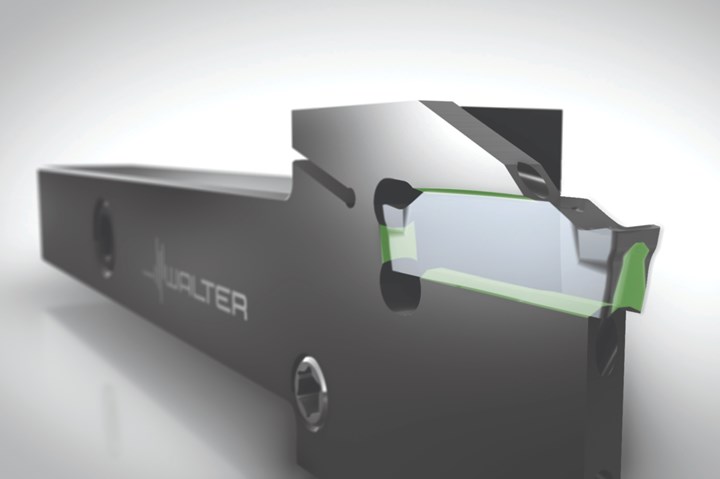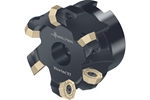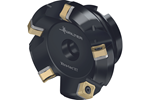Grooving, Parting Off Insert Geometries Dedicated to Eliminating Vibrations, Increasing Insert Life
The Walter Cut DX18 double-edged inserts boast a prismatic design, with new C, G, U and R parting off and grooving geometries now available.

Photo Credit: Walter USA
The Walter Cut DX18 double-edged grooving and parting off inserts with insert widths of 0.059-0.157" (1.5-4 mm) are the latest addition to Walter’s ever-expanding grooving product range. The patent-pending cutting insert is seated in the insert pocket with a prismatic design.
This insert seating is said to substantially eliminate the tendency for vibrations, increasing insert life as well as toolholder life. The design also prevents incorrect engagement, especially for narrow insert widths, and enables a high indexing accuracy. Elevated protective edge is an inbuilt feature that Walter says protects the clamping finger of the tool holder from chip-wash and acts as an additional chip breaker, further enhancing tool life and process reliability.
New DX18 geometries include the “C” cut off (parting off) geometries CF6, CF5 and CE4; “G” grooving geometries GD6 and GD3; the “U” universal geometries UF4, UD4 and UA4, dedicated to groove turning, parting off and grooving; and the “R” full-radius geometries for copy turning and radius grooving, including the sintered RF7.
The holders for these inserts are made for Swiss-style machines as well as conventional lathe and bar feeder machines. The holders are offered in both the signature precision-cooling thru-coolant configuration as well as external coolant configuration for economies. The G4014-P holders, for example, are designed for Swiss machines, allowing inserts to be indexed while on the machine gang tooling, reducing insert indexing time by as much as 70%. Alternately, the G4011 holders are offered for conventional lathes in both square shank and Capto-style designs, while the G4041 blade style holders are ideal for parting off close to shoulders in a limited space.
Related Content
-
The Ins and Outs of Hot Runner Temperature Control
A training checklist that explains the why and how of proper hot runner temperature control and system management.
-
How to Eliminate Chatter
Here are techniques commonly used to combat chatter and guidelines to establish a foundation for optimizing the moldmaking process.
-
Machining Center Spindles: What You Need to Know
Why and how to research spindle technology before purchasing a machining center.






.png;maxWidth=300;quality=90)





